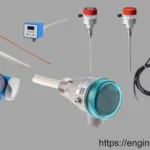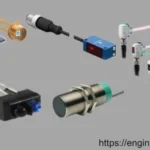What is a Light Sensor?
A light sensor is a device that detects and measures the intensity of light, converting it into an electrical signal. Used in various applications, light sensors enable devices to react based on lighting conditions, such as adjusting screen brightness or activating lighting systems automatically.

How Does a Light Sensor Work?
Types of Light Sensors
Light sensors are available in various types, each designed for specific applications:
1. Photoresistors (LDR): Light-Dependent Resistors change resistance based on light intensity, commonly used in simple light-sensing circuits.
2. Photodiodes: These semiconductors generate current in response to light exposure, used in more precise applications requiring quick response times.
3. Phototransistors: Similar to photodiodes but with amplification, making them sensitive to light changes, useful in remote controls and safety equipment.
4. Ambient Light Sensors: Measure surrounding light to adjust displays or other light-sensitive devices.
5. Proximity Sensors: These combine light and infrared sensing to detect nearby objects, commonly found in mobile devices.
6. Infrared (IR) Sensors: Detect infrared radiation, often used in motion detection and thermal sensing.
7. Ultraviolet (UV) Sensors: Specifically sense UV light, used in environmental monitoring and for UV intensity measurement.
Applications of Light Sensors
1: Consumer Electronics: Adjusting screen brightness on phones, laptops, and TVs.
2: Automotive: Activating headlights and dimming dashboards based on ambient light.
3: Industrial Automation: Controlling lighting in factories or adjusting equipment operation.
4: Environmental Monitoring: Sensing UV levels, ambient light, or changes in natural lighting.
5: Agriculture: Measuring sunlight for plant growth and adjusting greenhouse lights.
6: Medical: Used in optical heart-rate sensors and light-based diagnostic tools.
Top 10 Highly-Rated Light Sensors:
In a world increasingly dependent on automation and smart technology, light sensors have become essential components for various applications. From energy efficiency to security and convenience, these devices are versatile and indispensable.
If you’re considering buying a light sensor, Amazon offers a plethora of options with user reviews to guide your choice. Here, we’ve curated a list of the top 10 highly-rated light sensors available on Amazon to help you make an informed decision.
1: Philips Hue Motion Sensor
Features:
> Compatible with Philips Hue lights and smart hubs.
> Motion detection combined with ambient light sensing.
> Easy installation and battery-powered.
Why It Stands Out: Highly responsive with seamless integration into smart ecosystems, making it ideal for smart home enthusiasts.
2: Lutron Maestro Occupancy Sensor Switch
Features:
> Dual technology for occupancy and light sensing.
> Easy retrofitting into existing switches.
> Adjustable sensitivity.
Why It Stands Out: Perfect for energy-saving applications with reliable performance in various lighting conditions.
3: Eve Motion Sensor
Features:
> Apple HomeKit compatibility.
> Wire-free setup with an elegant design.
> Light and motion detection.
Why It Stands Out: Best for Apple users seeking a minimalist and effective smart home sensor.
4: Leviton Decora Smart Motion Sensor
Features:
> Integration with smart hubs like Alexa.
> Automatic ON/OFF functionality.
> Customizable light level settings.
Why It Stands Out: Balances affordability and performance for medium-budget smart home setups.
5: Samsung SmartThings Motion Sensor
Features:
> Zigbee-based for broader compatibility.
> Motion and ambient light detection.
> Adjustable mount for optimal placement.
Why It Stands Out: Offers great value for those invested in the SmartThings ecosystem.
6: AMIR Motion Sensor Light
Features:
> Budget-friendly motion-activated light sensor.
> Compact and lightweight design.
> Battery-operated for portability.
Why It Stands Out: An excellent choice for small-scale applications such as closets and hallways.
7: GE CYNC Smart Motion Sensor
Features:
> Bluetooth-enabled for app control.
> Works with GE CYNC smart lights.
> Adjustable settings for sensitivity and duration.
Why It Stands Out: Great for users seeking an entry-level smart sensor with app integration.
8: Topgreener PIR Motion Sensor Switch
Features:
> Infrared sensing technology.
> Multiple timing modes.
> Simple installation.
Why It Stands Out: Reliable and efficient for those prioritizing energy savings.
9: BN-LINK Smart Motion Sensor
Features:
> Wi-Fi-enabled for remote control.
> Works with Amazon Alexa and Google Assistant.
> Compact and user-friendly design.
Why It Stands Out: A budget-friendly smart sensor with modern features.
10: Wemo Motion Sensor
Features:
> Integration with Wemo smart plugs and devices.
> Advanced motion detection.
> Simple setup process.
Why It Stands Out: Ideal for users already invested in the Wemo ecosystem.
Conclusion
Choosing the right light sensor largely depends on your specific needs, budget, and existing smart home setup. The Philips Hue Motion Sensor and Lutron Maestro Occupancy Sensor Switch are excellent choices for high-end performance, while the AMIR Motion Sensor Light provides value at an affordable price point.
For those with smart home ecosystems, options like Eve Motion Sensor and Samsung SmartThings Motion Sensor offer seamless integration.
Remember to consider factors such as compatibility, ease of installation, and features before making your purchase. With these top-rated options, you can confidently enhance your home’s functionality and energy efficiency.
Explore More Sensor Technologies
If you’re fascinated by the world of industrial and electronic sensors, don’t miss these expert-curated lists that dive deep into the top sensors used across various applications:
- Top 10 Humidity Sensors – Discover the most accurate and reliable humidity sensors ideal for climate monitoring, HVAC systems, and industrial automation.
- Top 10 Proximity Sensors – Explore the best proximity sensors for object detection, automation, and smart devices in both industrial and consumer electronics.
- Top 10 Accelerometer Sensors – Learn about top-rated accelerometers used in motion detection, vibration analysis, and wearable tech.
- Top 10 Level Check Sensors – Browse the most effective level sensors for monitoring liquids, solids, and granules in tanks and silos.
- Top 10 Gyroscope Sensors – Find out which gyroscope sensors offer the highest precision for navigation systems, robotics, and mobile devices.


